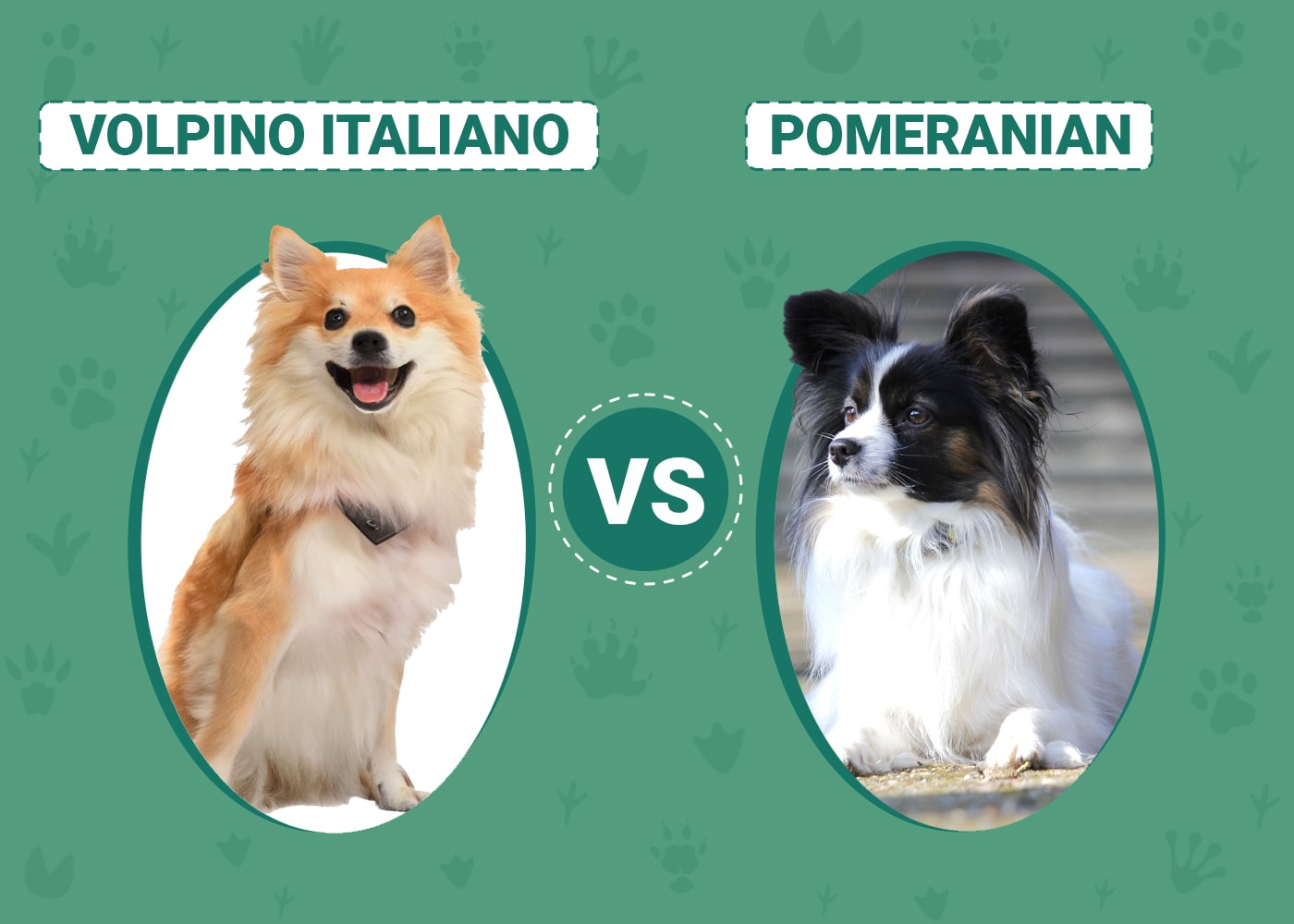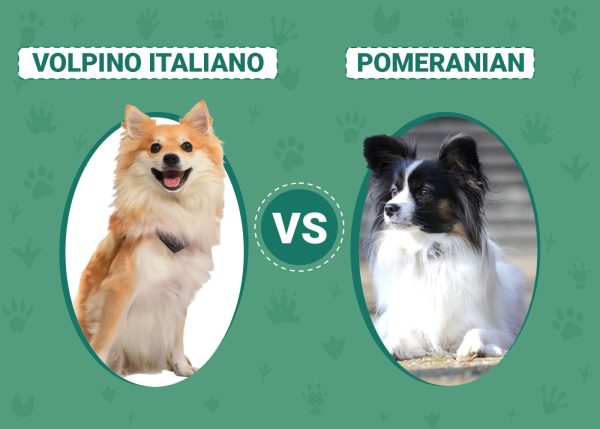Click to Skip Ahead
It’s not hard to mistake a Volpino Italiano for a Pomeranian. The two breeds look strikingly similar to one another, often have playful and exuberant personalities, and both descend from Spitz-type dogs, but they’re not related. Furthermore, if you look more closely, you’ll spot certain physical differences that aren’t easy to notice at first glance.
In this guide, we’ll walk you through the similarities and differences between the Volpino and the Pomeranian in terms of appearance, personality traits, general care, and the kind of home each would fit best into.

Visual Differences
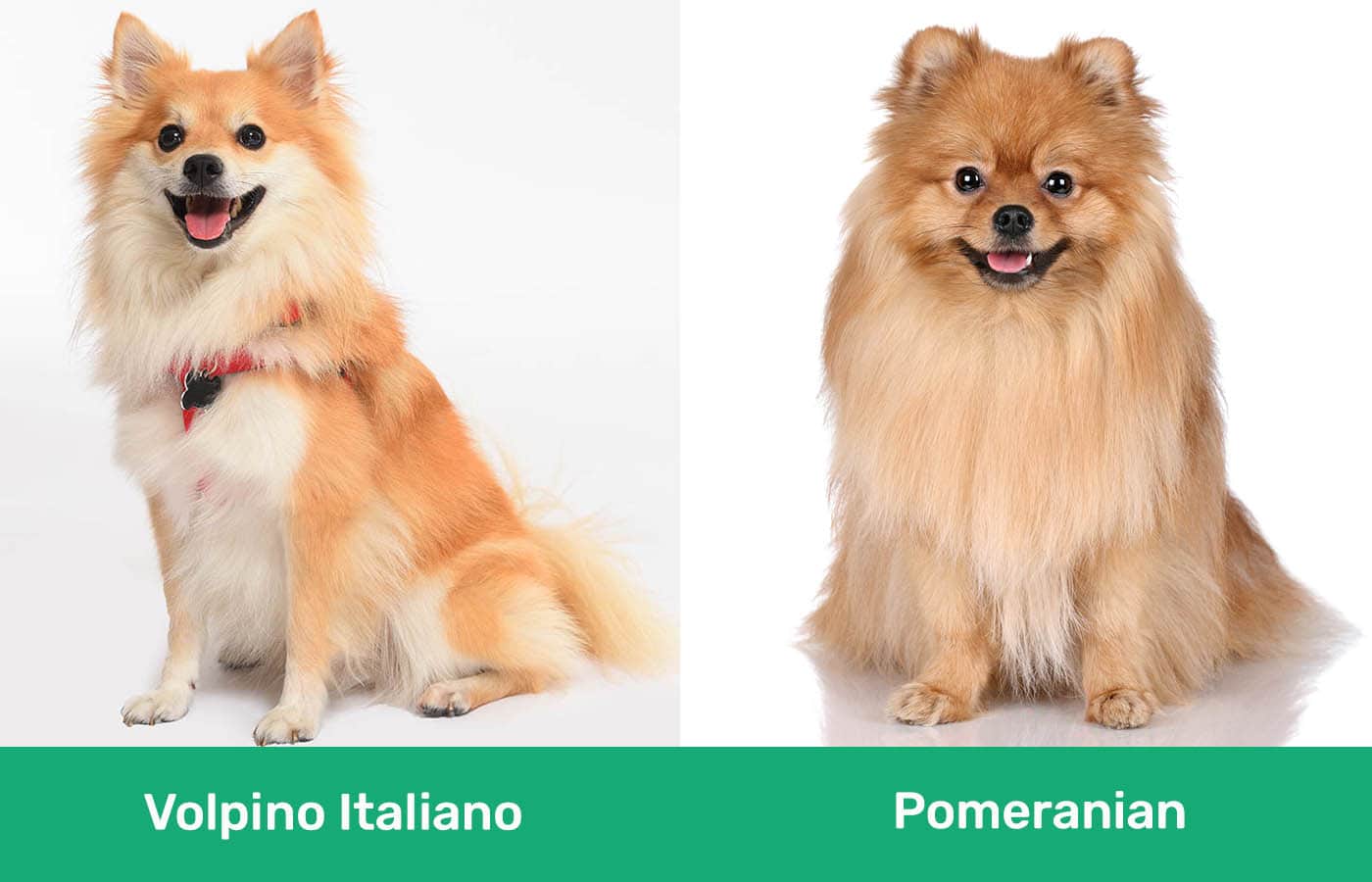
At a Glance
- Average height (adult): 5–12 inches
- Average weight (adult): 8–16 pounds
- Lifespan: 12–15 years
- Exercise: Around 1 hour per day
- Grooming needs: Moderate
- Family-friendly: Yes, with socialization
- Other pet-friendly: Yes, with socialization
- Trainability: Generally receptive and easy to train, but can be strong-willed
- Average height (adult): 6–7 inches
- Average weight (adult): 3–7 pounds
- Lifespan: 12–16 years
- Exercise: Around 30–45 minutes per day
- Grooming needs: Moderate
- Family-friendly: Yes, with socialization, but may do better with older children
- Other pet-friendly: Yes, with socialization
- Trainability: Enthusiastic, needs lots of consistency
Volpino Italiano Overview
The Volpino is a member of the foundation stock service group. The breed shares ancestry with the German Spitz and dates back thousands of years. The Volpino Italiano was first developed in ancient Italy, and the breeding of these dogs has continued in the country ever since.
In ancient Italy, they were companions to people from all walks of life, from the nobility to the working man. Pomeranians, on the other hand, have long been associated mostly with royalty.
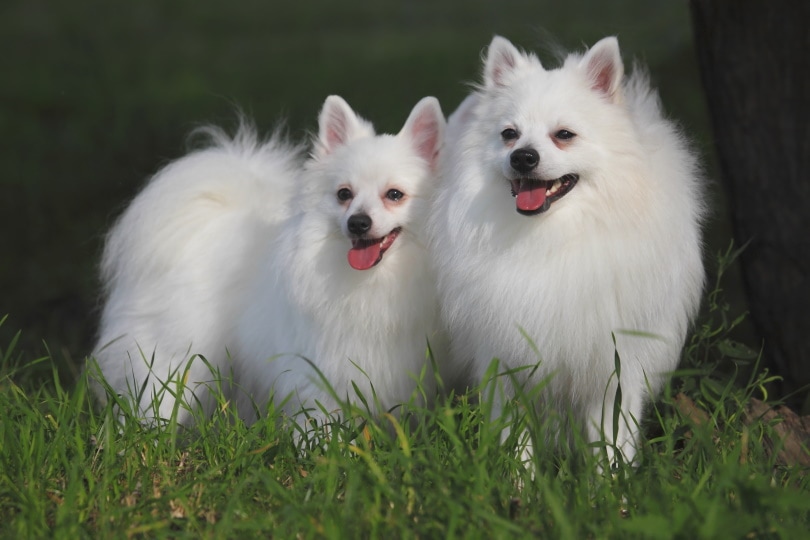
Appearance
The Volpino Italiano has a long, dense coat with a rough texture described by the AKC breed standard as “standing-off”. The eyes are round and wide, somewhat like the shape of an egg, and the dog has a curled-over tail, a pointed muzzle, triangular ears, oval-shaped feet, and a squarely-built body.
The coat color can be red or white, and champagne is accepted as per the AKC breed standard, but it is not considered “desirable”. There may also be shading present on the ears and white on the feet.
Character
Like the Pomeranian, the Volpino is typically an energetic, alert, and playful dog that bonds very strongly to their human family. This is a great combination of traits, as you can have a fun time playing with the Volpino, but also snuggle up on the couch with them—an activity they’re reputed to have a strong affinity for.
On the other hand, while Volpini have a lot of love to share inside the house, they may be much warier outside the house. The AKC notes that this breed is “reserved” around strangers. They also rely quite strongly on routine and are not considered to be the most adaptable breed.
Please bear in mind that these are just general breed traits—socialization and genetics play a big part in determining an individual dog’s character.
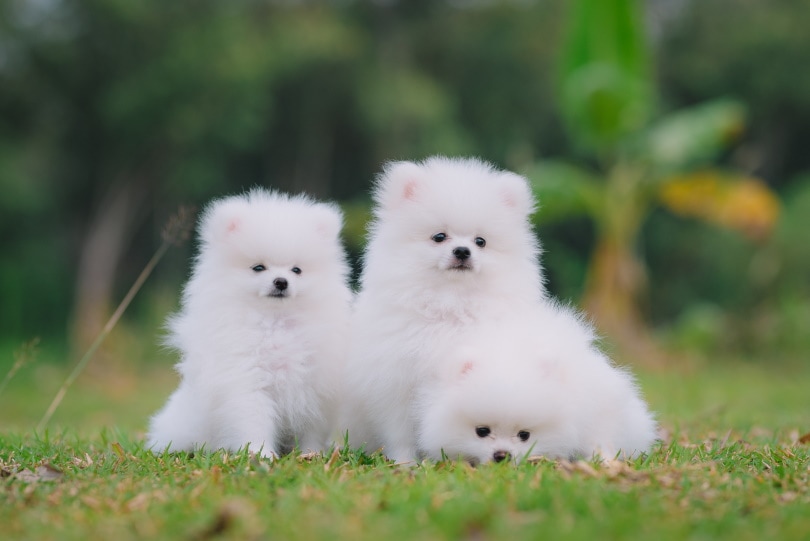
Training
The Volpino Italiano thrives in a training environment where plenty of positive reinforcement is used. They’re very smart and typically learn quickly as long as sessions are not too drawn-out (10–15 minutes per session is just enough), but they can be pretty stubborn, too, so you might meet with a bit of sass along the way. If you’re consistent, patient, and stock up on tasty treats, however, you can’t go wrong.
Health & Care
The Volpino Italiano has a long expected life span (12–15 years) and hasn’t been linked to many major health concerns. Two conditions to keep an eye out for are patellar luxation,1 which is when the kneecap moves out of place, and primary lens luxation,2 which is an eye disease.
If you buy a Volpino Italiano from a breeder (quick note—you might want to consider checking out adoption and rescue organizations before going this route!), make sure it’s a reputable breeder that screens their dogs for potential genetic defects or conditions and provides health guarantees.
In terms of general care, the Volpino Italiano’s coat is fairly easy to look after—you only need to brush it two or three times per week. However, these dogs do shed more heavily than usual during shedding seasons because they have an undercoat. During these times, you’ll likely need to brush your Volpino daily.
It’s crucial to check your Volpino Italiano dog’s nails regularly to make sure they’re not getting too long. Trim the nails whenever necessary or ask a groomer to do it for you. Have a look inside the ears regularly, too, to see if they’re due a clean.
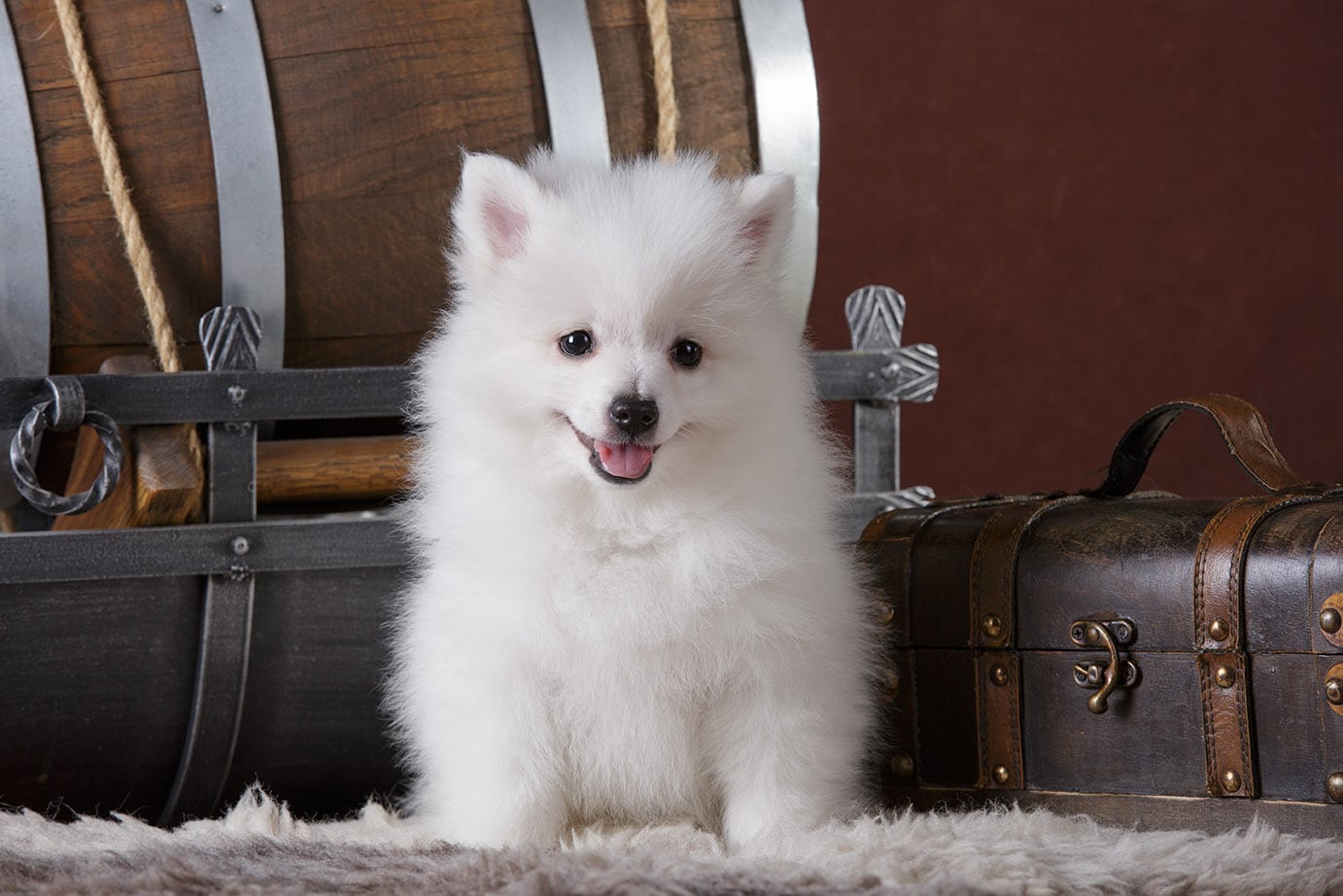
Exercise
The smart and energetic Volpino does well with around an hour of physical exercise per day. This will help prevent destructive behavior and nuisance barking. You can exercise your Volpino with a few daily walks and by spending some time playing with them in your home or yard.
They need plenty of interaction and will appreciate you being involved in at least some of their play sessions. At other times, you can provide mentally stimulating toys (like obstacle feeders) that your Volpino can work on alone.
Suitable For:
The Volpino Italiano needs a committed and loving family who will play and interact with them every day, and really bring them into the family fold. This is because not only is the Volpino a very smart dog in need of mental challenges as well as physical exercise, but they also thrive on the bonds they create with their families. As is the case with all dogs, your Volpino should live indoors in a safe, warm environment—not outside.

Pomeranian Overview
The Pomeranian descends from spitz-type dogs that worked as sled dogs in the Arctic, but their initial development took place in Pomerania (a region that spans part of Poland and Germany). The original Pomeranian was much larger than the toy breed we know today—a breed that is, in fact, the smallest of all spitz breeds.
Pomeranians have long been associated with royalty, particularly Queen Victoria of England, who kept and bred them.

Appearance
Though they look similar to the Volpino Italiano (especially the coat), the Pomeranian has a few key aesthetic differences. Most notably, the Pomeranian is smaller in size, has a wide variety of possible coat colors (18 AKC standard colors—16 more than the two possible Volpino colors), and has a tail that lies flatter over the back than the Volpino’s more curled-over tail does.
The Pomeranian also has rounder feet, eyes that are less round and more almond-shaped than the Volpino’s, and a noticeably short muzzle, whereas the Volpino has a somewhat longer muzzle.
Character
Well-socialized Pomeranians are quite similar to the Volpino Italiano in terms of character. They’re typically very affectionate, playful, alert, vivacious, and confident. The Pomeranian may be a little less wary of strangers than the Volpino Italiano, but they still make excellent watchdogs due to their alertness and desire to be involved in everything!
The Pomeranian’s boldness can mean that they have a tendency to be outspoken. This might lead to nuisance barking if they aren’t taught how to spend time alone or don’t get enough mental or physical exercise.
Pomeranians may fit best into a family with sensible older children, or, if young children are at home, they should be supervised at all times when spending time with the Pom. Pomeranians might act like they’re big dogs born in little dogs’ bodies, but they can be easily injured by overzealous playmates.
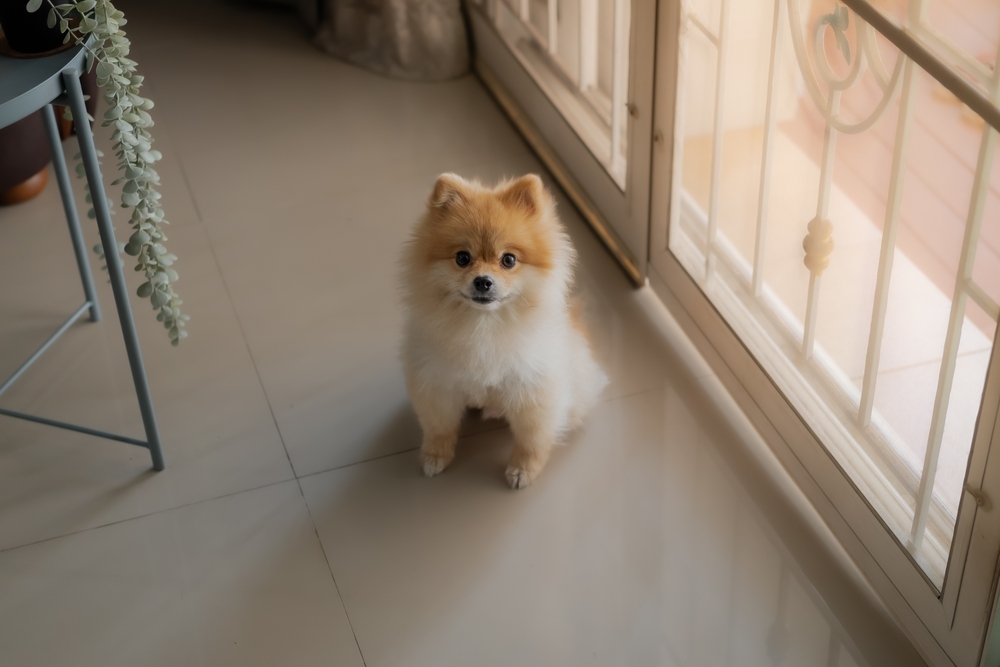
Training
Pomeranians are chirpy little dogs that often take training in their stride. They learn quickly, but, like the Volpino, they are pretty self-confident and can be headstrong, so need patience, consistency, and positive reinforcement.
Housetraining is especially important for Pomeranians because they’re so tiny that a jump from furniture could injure them. If you want your Pomeranian to be allowed on furniture, you might want to teach them not to jump and, instead, to wait for you to pick them up and put them down. Alternatively, you could try teaching them to use a ramp or steps.
Health & Care
Though their bones and joints can be fragile, the Pomeranian is generally quite healthy with a long expected lifespan of 12–16 years. Irresponsible breeding can result in an increased risk of health conditions like patellar luxation, hypothyroidism,3 congestive heart failure, and tracheal collapse,4 so, again, pick your breeder with care.
Grooming-wise, the Pomeranian needs to be brushed a few times a week to prevent mats and tangles from developing. These dogs can benefit from the attention of a professional groomer every 4–6 weeks for a proper bath, nail trim, and coat tidy-up because doing a full bath and groom on a Pomeranian yourself can be tricky and time-consuming.
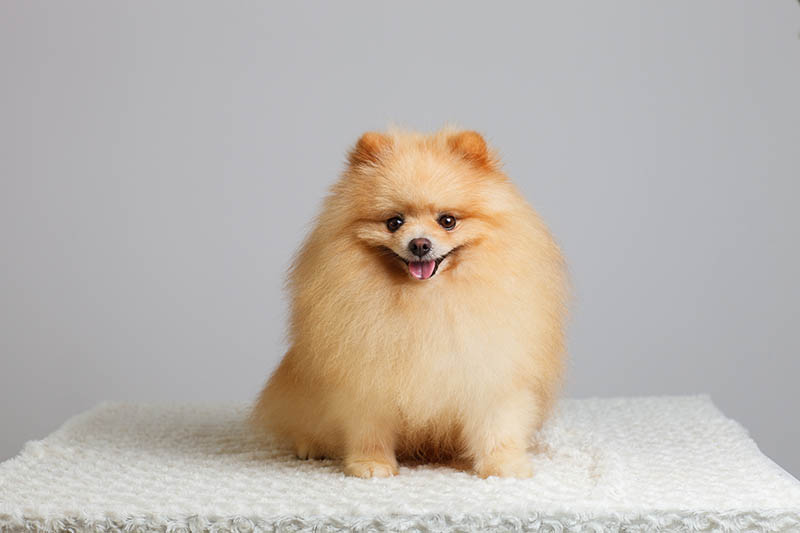
Exercise
Pomeranians need around 30 minutes of exercise per day, ideally split into two walks. You can also incorporate play sessions at home into your daily routine to supplement the exercise they get from walks.
A word of advice—when out and about with your Pomeranian, especially in areas where they can roam freely, be mindful of potential predators. These dogs are so small and light that a large enough predator could easily carry them away if they’re left unattended.
Suitable For:
The Pomeranian needs a loving and gentle family that understands how physically fragile they can be, which is why a family with older children might be more suitable for the Pomeranian than one with very young kids.
The Pomeranian’s family should also take care to train and socialize them properly, so things like nuisance barking and territorial behaviors don’t become a problem later on.
Which Breed Is Right for You?
It’s understandable that certain breeds catch your eye and become your “dream dog”, but the best way to make sure you’re getting the dog that’s right for you is to learn as much as you can about the individual dog rather than just the breed.
If we’re going by physical traits and generalizations in terms of character, the Volpino Italiano would be a better fit for someone looking for a slightly larger dog that is very affectionate with family. If you want a tiny dog that might be a bit more adaptable and open to strangers, the Pomeranian might be for you.
However, personalities in dogs vary greatly, so it’s impossible to choose the “right” dog based on these generalizations alone. We would advise meeting and spending time with the dog to help you decide. On a final note, please consider adoption if possible!
See also:
- Rhodesian Ridgeback vs. Vizsla: Main Differences (With Pictures)
- Weimaraner vs Doberman – What’s The Difference (With Pictures)
Featured Image Credit: (L) Natalia Fedosova, Shutterstock | (R) Jumpstory

